As a small business owner, you may be considering custom software development to help scale your business. While custom software can be an excellent option for many business owners, providing you with a tailor-made solution designed to meet your unique set of business challenges, it doesn’t come without its challenges.
You may not have the time or in-house expertise to put together a robust set of software requirements. You likely have a very tight budget and little room for things to go wrong. If that sounds like you, it’s more important than ever to learn the do’s and don’ts of custom small business software development.
In this article, we will cover everything you need to know to tackle your custom development project with confidence, so you can maximize your ROI and grow your business!
Signs your small business needs custom software
If you own a small business, it's important to take stock of the systems and processes you currently have in place. If you find yourself facing any of the following issues, it could be a sign that you need custom software to help streamline your operations and increase efficiency.
- You are spending too much time on manual tasks and processes
- Your existing software can’t keep up with the growth of your business
- You are dealing with complex data that’s difficult to manage
- You are manually transferring data between systems or platforms
- You need to reduce costs and increase productivity
Off-the-shelf vs custom software development
If you’re looking into custom software solutions for your small business, you’ve likely also considered off-the-shelf solutions. Making the right choice between custom business software and an off the shelf solution can be tricky.
There is no one “right” choice, but rather a multitude of factors specific to your business that may lead you to choose one solution over the other to help you meet goals such as gaining a competitive advantage in the market, maximizing ROI, or expediting growth. With that in mind, let’s take a look at some of the key differences between custom and off-the-shelf software:
| Custom Software | Off-the-Shelf Software |
|---|---|
| Tailored to your exact business needs and changes and customization can be done relatively easily. | Customization options are limited and low flexibility to adapt to needs over time. |
| Complete ownership with low recurring expenses. | Typically requires a high recurring expense and pay for features you don't need. |
| Higher upfront costs. | Usually lower up-front costs. |
| Lead times to develop and launch can be long. | Quick setup and readiness to use. |
| Greater control over security and data. | Less control over security and data. |
| May be difficult or expensive to get post-launch IT support. | IT support is easily available. |
Read: 6 Clear-Cut Steps to Decide - Custom vs Off-the-Shelf Software
Custom small business software development - do’s

You’ve decided to pursue custom software development, and you’re quickly realizing how overwhelming it can be. You want to maximize your ROI, but there are many details to consider and manage, including adequately scoping out the work, documenting requirements, finding custom software developers, and managing the project.
To help you ensure a smooth process from start to finish, we’ll walk through a few things you absolutely should do as part of your custom software development process:
Identify business processes to optimize
Before anything else, you need to understand your business’s needs. In other words: why are you looking for software in the first place? Without a clear understanding of what business processes you are trying to optimize or what problem you are trying to solve, it will be impossible to build the right solution.
Are you trying to optimize a specific business process? Offload your team from tedious or manual work? Prepare your business to scale? To help you gain clarity on the specific business processes that a custom software project can help to optimize you should:
- Interview the people who are doing the business process today. This could be the people who are using an existing software solution or those doing the manual work that you want to replace with custom software applications. This will help you avoid any assumptions and, instead, accurately document the needs of the end users and what the process looks like today.
- Pull usage reports for existing software tools to understand the processes that are being done in the current tools. This can help you to see not only what needs to be replicated in some ways in the new tool but also where there may be room for optimization.
- Inspect off-the-shelf products before building a custom software solution. This can be helpful for small business owners even if they do not intend to buy pre packed software, as they can make note of things they like and dislike about existing tools. Typically you can simply request a free trial or even just look at demos online to get a feel for what’s on the market.
PRO TIP: Depending on the complexity of the business process you are looking to optimize, you may want to create a business process map to help with your analysis. Doing so can give a more complete picture of how the business process works from start to finish as well as allow you to collaborate with internal end-users or team members who are involved in the process to ensure it is well-documented.
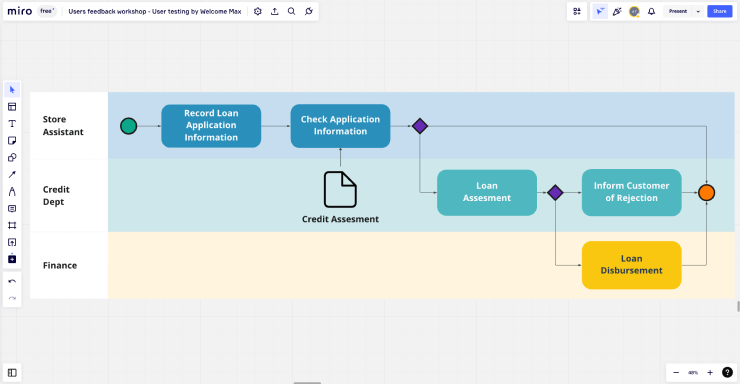
Work with an expert to define requirements
Defining software requirements can be a challenge. You may not have the right technical staff internally who can sufficiently document your project requirements or you may simply not have the time to do it. Either way, it can be helpful to work with a solution architect or business analyst to help you thoroughly and accurately document your software requirements so that you can:
- Verify that there is a legitimate need for the new custom built software rather than simply purchasing a pre packaged software off the shelf.
- Ensure the software development team has complete clarity on the requirements of the proposed small business software.
- Provide a high degree of transparency right from the beginning of a project to all stakeholders who may be involved.
- Prevent the final software from needing extensive rework or changes due to missing criteria.
- Ensure the accuracy of the cost estimates you receive from custom software development companies.
An experienced solution architect or business analyst can ensure that your needs are properly communicated and understood by the development team, helping to avoid costly mistakes.
PRO TIP: A Software Requirements Specification (SRS) is a valuable tool for prospective vendors, as it will allow them to create more detailed project estimates. By providing a complete and detailed SRS, vendors can identify the scope of the project and the potential costs involved.
An SRS should include:
- Product summary and scope
- Intended audience
- Assumptions and dependencies
- Functional requirements (what the system is supposed to do)
- Non-functional requirements (how the system should perform)
- Acceptance criteria
Leverage existing software infrastructure
Leveraging existing software infrastructure or off-the-shelf software to build a custom software solution can be a cost-effective way for businesses to develop custom solutions that meet their specific needs. By integrating existing software solutions or piecing together a few off-the-shelf solutions, businesses can reduce the cost of development, secure a more reliable platform, and benefit from the added value of well- established solutions.
For example, SoftKraft’s core business processes - time tracking and invoicing - leverage existing software infrastructure. We made the decision to leverage time tracking software with strong project management tools integrations instead of implementing this solution on our own, which would take a lot of effort. The custom software solution we created handles our standard bi-weekly invoicing along with all necessary business exceptions and checks we would otherwise have to perform manually.
Creating a custom solution like this that takes advantage of existing software can be a great way for growing businesses to reduce upfront development costs but still see a significant ROI on custom software. The initial version of our time tracking and invoicing integration tool was built in just one week using a rapid application development process!
PRO TIP: If you’re considering going this route, it’s very important to work with an experienced software development team who can advise you on appropriate solutions, costs, trade offs, and more, so you can make the best decision for your business.

Find the right software development company
Anyone that has been through the process of developing a custom solution will tell you that your business partners matter. As a small business, you should look for a partner who specializes in working with companies of your size, who understands the unique needs of a growing business, and who can provide you with the technical skills needed to bring your software idea to life and maximize your ROI.
Finding the right custom software development partner isn’t easy. There are thousands of options on the market, offering a wide range of services. However, a good place to start is to look for companies that offer:
- Portfolio of work with SME clients. Look for a development partner with a strong reputation and track record of delivering successful projects specifically to small business clients. Ask for references from previous clients and check their reviews online.
- Knowledge and expertise in your domain. Determine if the partner has the necessary knowledge and expertise to develop the software you need. Consider not just their technical expertise but also their industry knowledge, project management expertise, and business acumen.
- Strong communication skills. It is important to have clear and consistent communication with the custom software development partner. Make sure that you can easily get in touch with them and that they are willing to listen to your feedback and concerns.
- Appropriate security practices. Make sure the partner has the necessary security measures in place to protect your data and ensure the safety of your business.
- Documented development methodology. Having a well-documented and well-executed project development process in place will improve efficiency and help the team tackle challenges that pop up along the way.
Effective RFP for Software Development [Template & Process]
How to Choose a Software Development Company in 10 Steps
PRO TIP: Eastern Europe has become a popular region for custom software development services due to its relatively low labor costs and access to a large pool of highly-skilled frontend and backend developers. Countries such as Poland, Ukraine, and Romania are becoming increasingly popular for technology companies looking to reduce their software development cost. Why do companies outsource to Eastern Europe?
- Highly-skilled, growing IT workforce
- Cost-effective developer rates compared to Western Europe and the US
- Strong English language proficiency and cultural affinity
- Convenient time zone overlap for US clients
Compare development cost estimates
Software development cost estimation is notoriously difficult. While no estimate will ever be 100% accurate, you should always have a working estimate up front to ensure you can plan proper resources, look for cost saving opportunities and generally ensure everyone is on the same page.
You’ll likely be requesting cost estimates from development companies you are interested in working with. When you do this, ensure you are looking at the whole picture and taking into account the following cost factors:
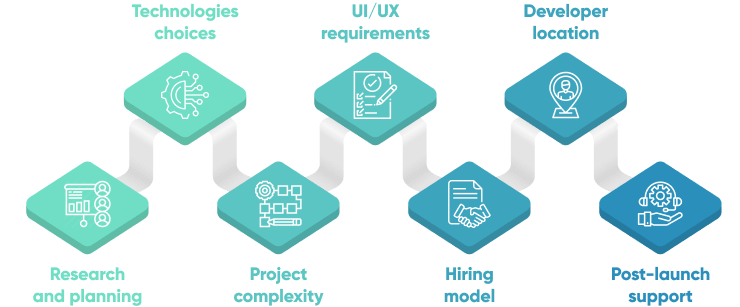
- Research and planning - Regardless of the complexity of your software product, you will need to do some level of research to help you define exactly what it is you want to build and how you want to build it.
- Technology choices - Technology choices can certainly affect your software development cost. When considering various technologies, developers must take into account the long-term costs associated with maintaining the technology, as well as the cost of training staff to use the technology. Choosing an open-source technology can be an effective way to reduce upfront costs, but the cost of maintenance must be taken into consideration as well. Similarly, choosing an off-the-shelf technology can reduce development time, but the license costs should be taken into account.
- Complexity of the project - It may seem obvious, but the cost of developing a software product is closely related to its complexity. Complex software requires more time and resources to develop, as it involves more intricate coding, more complicated testing, more robust security, and more complex user interface design. This can result in a significantly longer development cycle and higher costs.
- UI/UX requirements - Design work can have a significant impact on the software development cost. The amount of work and resources that go into the design - both the user interface (UI) and user experience (UX) - can be significant. You should ensure you are properly scoping this out if you want to estimate project cost accurately.
- Hiring model - Consider who will be supporting the development of your software product. Will you be working with an in-house team, freelance developers you hire and manage, or perhaps a full-service dedicated development team hired through an outsourcing company? The hiring model you choose will affect the software costing estimation.
- Development team location - If you’re outsourcing your development project, you should consider the location of the software development company or freelancers you hire. The location of your developers can dramatically impact the rates you pay.
- Support and maintenance - Support and maintenance can significantly impact the cost of software development. Without proper monitoring, on-call support, and technical improvements, the software developed can quickly become outdated and expensive to maintain.
Estimate your project’s ROI
During the planning process, you will likely investigate more than one way to accomplish your goals. For example, you may have cost estimates to:
- Create custom software from the ground up.
- Build a custom solution by integrating existing software.
- Buy pre packaged (off the shelf) software.
Each of these scenarios will have a different ROI and in order to decide how to move forward, it can be very helpful to compare them. Software ROI can be defined as an organization’s gain or benefit from implementing new software or technology. It can be calculated as:

While it may look like a simple formula, in reality benefits or gains from a custom software investment or even the purchase of an off-the-shelf product can be difficult to quantify. Consider benefits such as increased revenue, improved employee productivity, a rise in automation, or even higher cost optimization.
PRO TIP: Because ROI can be seen in a variety of areas (some more qualitative than quantitative), calculating ROI can be challenging. Consider selecting one or more areas where you specifically want to see the impact of your software and go from there. For example, you could calculate ROI as it pertains to:
- Revenue over the next 2 years.
- Employee productivity over the next 5 years.
- Average time to close a sale over the next 12 months.
Custom small business software development - don’ts

We’ve walked through a few ways you can maximize the success for your development project, but what about all of the things you should avoid when building custom software for your small business? That’s what we’re going to cover in this section.
Treat UX as an afterthought
UI/UX design is a critical part of any front-end development project. Without a great design you risk building something that users simply do not find appealing or usable. In fact, 25% of project failures are attributed to UX design issues!
One of the best ways to avoid treating UX as an afterthought is to draft a design brief. You can do this internally or work with a UI/UX designer to do this. The design brief should include:
- Custom software overview. Succinctly describe the main function of the custom software application. Without clarity on purpose, you risk the design process producing something that is not aligned with the main intent of your final product.
- Target audience details. Who will be using your small business software could dictate things such as its color palette, the acceptable learning curve, and its overall look and feel. Ensure you have conducted adequate research to understand your user’s needs, preferences, and expectations.
- Scope. You may be creating a brand new software application, or you might be customizing an existing solution. Make sure you clarify the scope, so your team can produce appropriate designs to fulfill your needs.
- Project team. List all of the creative and project management team members who will be working on the project, along with their relevant tasks and responsibilities.
- Deadlines. The design brief should provide the final delivery date of designs, along with any relevant milestones that should be achieved along the way. These deadlines should be aligned to the custom software application’s broader development schedule to prevent dependency issues.
Before you begin custom app development, you should have a UX design locked in. This means, you should have done all of the work to understand your users, define user scenarios, and design an interface that’s tailored to your users, aesthetically pleasing and easy to use.
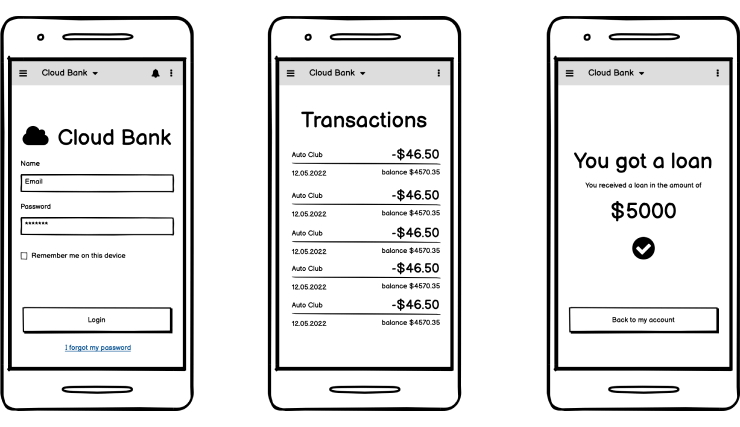 For wireframing, you can use tools like Figma, Axure and Balsamiq. After wireframing, you can design visual images and link the screens in a prototyping tool to create a digital prototype of your product. A prototype helps to visualize the product design in a way that is very similar to the working product. A few popular prototyping tools are Figma and Adobe XD.
Need some more help with your UX? Check our UX/UI design services.
For wireframing, you can use tools like Figma, Axure and Balsamiq. After wireframing, you can design visual images and link the screens in a prototyping tool to create a digital prototype of your product. A prototype helps to visualize the product design in a way that is very similar to the working product. A few popular prototyping tools are Figma and Adobe XD.
Need some more help with your UX? Check our UX/UI design services.
Mismanage user and business data
Small business leaders should not skimp on software security when building custom software solutions. Security breaches can cost the business financially, damage customer trust, and negatively impact the business' reputation. To protect the business, its customers, and its data, it is important to invest in secure software development practices and tools.
This will help prevent costly security breaches and ensure that the business is compliant with industry regulations and standards, such as the General Data Protection Regulation (GDPR).
Furthermore, you need to be aware of the risks of a vendor mismanaging your data or IP. Anytime you share sensitive information about your IT systems, you inherently reduce security. Of course this is often a risk that is necessary to take on, but it’s important to think through the implications before engaging with vendors and sharing sensitive data.
PRO TIP: How to avoid data breaches and IP mismanagement?
- Enter into an non-disclosure agreement (NDA) with the vendor (following your local IP laws). Make sure this is in place before you share any confidential information.
- Conduct research on independent review platforms before entering into an agreement with a vendor. You should look into the vendor’s reputation and any past breaches of its clients’ intellectual property rights.
- Investigate the vendor’s internal risk practices, their ability to safeguard your IP, and what their response would be to a data breach within their organization.
Take a look at our Custom Software Development Contract Template Checklist
Ignore integration requirements
Every company will have unique software integration needs. Many off-the-shelf software systems will have some integration services, but they might not be the right ones for your business (or flexible or robust enough to handle complex data).
When building custom software, you get to decide what existing software or enterprise apps the new solution will integrate. Direct integration with other software tools can help improve process efficiency and reduce the overhead of maintaining 3rd party integration tools.
All integrations necessary should be documented during the requirements gathering phase, implemented during the software development phase, and thoroughly tested before deployment.
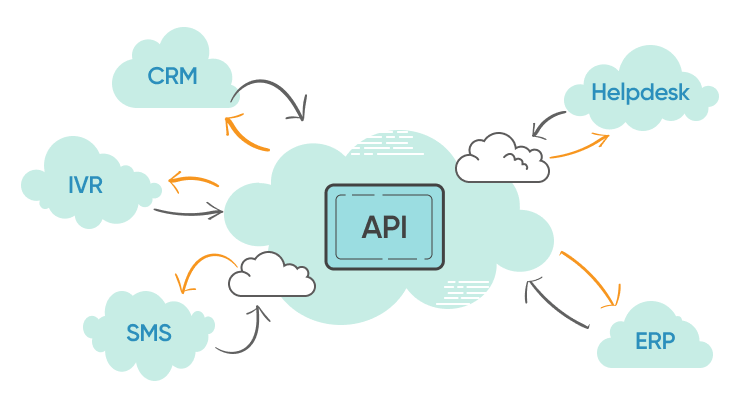
PRO TIP: If you aren’t sure what your integration needs are, a software architect or consultant can help analyze your current systems and workflows and provide assistance scoping out the requirements for proper integration. It’s very important to build in integrations up-front rather than trying to retrofit a solution after the fact to meet your integration requirements.
Need some assistance scoping out integration requirements? Learn more about our Software Development Consulting Services.
Underestimate the impact of scope changes
Building custom software requires a great deal of effort and resources, and any changes to the scope of the project can significantly impact the timeline and budget. To avoid being hit with an unexpected extension to the delivery timeline or unexpected costs, you should:
- Thoroughly document project requirements up front. Many small businesses developing custom software think they have a good idea of what they want but as development begins, they realize that they didn’t have a truly comprehensive set of requirements - and these missing requirements can massively affect the overall project scope - and your final bill.
- Resist the urge to add features. It can be tempting to add features or want to integrate new ideas into the software during development. These changes will not only come at a hefty cost, but changing priorities can also throw your developers off course and cause delays to your project.
- Take care to put together an accurate cost estimate. As we discussed earlier in this article, estimating development costs is notoriously difficult, but the more effort you put into gathering an accurate estimate, the less likely you’ll be hit with unexpected costs.
The main thing to understand here is that while you may think a change to the project scope will be simple, it likely won’t be. A small change could cause the need for UI/UX design rework, software architecture redesign work, changes to resource allocation, budget changes, and delays in delivery. Because of this, any change should be carefully considered before it is handed over to the development team.
PRO TIP: If your custom software development company uses agile development, you must manage the project scope throughout the project. It’s not a one-time thing. New discoveries from the users, product owners, and others may bring in new requirements. Additionally, feedback from stakeholders may require the project scope to change.
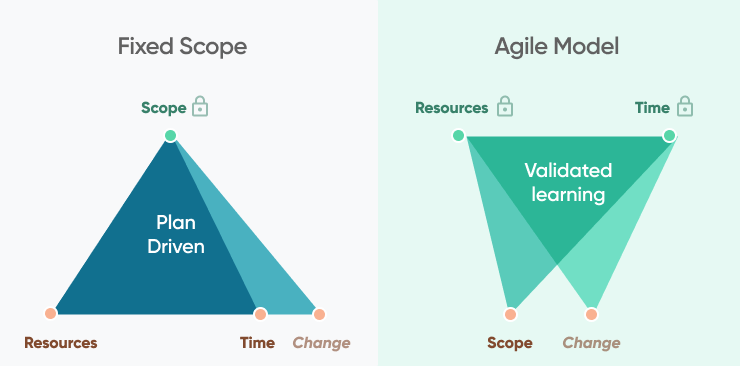
As the scope changes, so will your budget and timeline. The agile approach makes budget management a shared responsibility between the client and outsourced team. The product owner manages the backlog, the sponsor agrees on the budget, and the team delivers the backlog and spends or manages the sprint budget within agreed constraints.
Wait too long to start user testing
A thorough testing plan is a key element of any software development process. You should not wait until your software is fully built. Instead you should integrate user testing into every stage of development. In this way you can get feedback in real time that can be used to improve the software’s design.
Work closely with your development team to design the testing plan and ensure you have adequate staffing to assist with on-going testing. A few things to consider when you’re conducting testing:
- All operational processes should be tested systematically. Bring in real users if needed to ensure all operations that are essential to the business are functional.
- All integrations should be thoroughly tested. Make sure the system is working with other systems or software used within your organization as you expect.
- The application should be tested on both desktop and mobile devices. Additionally, if the development included any mobile apps, those should be tested as well.
- The final software features should match what was defined in the requirements list. Things may have changed over the course of development, but the testing team should be checking the final software against the requirements list.
Forget about maintenance
When building custom software for your small business, make sure to consider the cost of maintenance and support. Performance monitoring, on-call support, and technical improvements are all necessary for ensuring your software remains secure, reliable, and up-to-date.
You should clearly understand what specific post-launch support is included and how you can get into contact with the team should you need them in the future. We suggest you consider the following maintenance and support costs:
- Performance monitoring. Custom software should be reviewed regularly to ensure that it is running as expected. This could include things like checking system logs, tracking usage, and identifying potential areas of improvement. If a system is not monitored properly, problems may go undetected and result in costly repairs or system downtime.
- On-call support. Since your business is ever-evolving, your use of your software may evolve as well. You may need to use the software in unexpected or new ways. Having a team of technicians ready to respond to inquiries and provide technical assistance can help reduce the amount of time required to resolve issues.
- Technical improvements. As your business grows and new technologies become available, you’ll find you want to enhance your custom software. Technical improvements could also be required for things like bug fixes, security patches, or feature upgrades. Failing to keep software up-to-date can lead to security vulnerabilities and poor performance for users.
PRO TIP: Depending on the number of users you have using your software, it may be worth investing in an automated monitoring tool. Automated monitoring tools can provide you with real-time alerts if any issues arise, and can provide metrics to help you quickly identify and resolve any problems.
Additionally, setting up automated tests can help you uncover any potential issues with the software before they become an issue for users. This can save you time and money, as well as help you ensure your software is running smoothly for your users.
Small Business Software Development with SoftKraft
Looking for a custom business software development company? At SoftKraft we offer software development consulting services, we’ll work closely with you to understand your unique business challenges, map out a strategic solution, and build software to your specifications so you can maximize your ROI. Get in touch!







